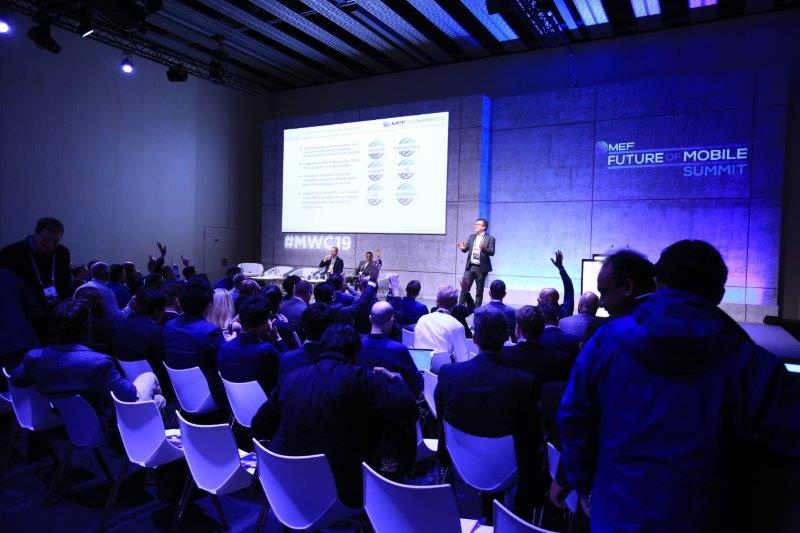MEF Director of Programmes Nicholas Rossman shares an update on the latest developments in the FCC’s stance on robocalls as it issues new directives to limit their potential impact and protect consumers.
Do you reside in the United States and are you receiving unwanted calls? Many Americans do receive pre-recorded or automated voice messages for marketing purposes, typically made using auto-dialling technology to reach large numbers of people quickly. Robocalls are a common issue, and the Federal Communications Commission: (FCC) has recently issued an order aimed at addressing the number of robocalls received within the United States.

The Robocall Problem: A Quick Recap
Robocalls have been present for some time, but technological advancements have increased their frequency. These automated calls are often used for telemarketing and other purposes. The FCC has been working on this issue, and their latest order is a continuation of those efforts.
What’s New in the FCC’s Order?
The FCC’s order, released on February 6, 2025, focuses on obligations for voice service providers to block robocalls. Here are the key changes:
Expanded Do-Not-Originate (DNO) Blocking: Previously, gateway providers were primarily responsible for blocking calls from DNO lists. Now, all voice service providers along the call path must participate. This means more calls from invalid, unused, and unallocated numbers, as well as numbers requested for blocking by subscribers, will be stopped.
Standardized Notification for Analytics-Based Blocking: If a call is blocked due to analytics systems identifying it, providers must now use a specific code (SIP code 603+) to notify the caller. This standardization aims to provide information to callers.
While these statistics demonstrate progress, challenges persist. Robocallers have adapted by exploiting smaller carrier networks and employing techniques like caller ID spoofing to bypass detection. By 2024 all remaining small carriers, including those using non-IP networks, were expected to implement robocall mitigation measures.”
How May This Affect You?
These changes may have several effects for consumers:
- Potential for Fewer Robocalls: With more providers blocking calls, there could be a reduction in unwanted calls.
- Potential Protection from Scams: By blocking calls from certain numbers, there may be a decrease in opportunities for fraud.
- Improved Notification: The standardized notification for blocked calls may make it easier to understand why a call was blocked.
What Does This Mean for the Telecoms Industry?
The new order requires voice service providers to update their systems and processes, which may involve costs. The FCC has considered these costs alongside the potential benefits. Smaller providers may face challenges, and a phased implementation timeline is in place.
What Can You Do?
While the FCC has taken action, individuals can still:
- Register for the Do Not Call Registry.
- Use call-blocking applications.
- Be cautious of unsolicited calls and avoid giving out personal information over the phone.
What did FCC do before?
Notably the biggest request to the industry by the FCC was the implementation of the STIR/SHAKEN framework. the STIR/SHAKEN framework went into effect on June 30, 2021 for major voice service providers. According to a press release by Transaction Network Services (TNS), unwanted robocalls decreased by 8% in the first half of 2022 compared to the same period in 2021, dropping from 37.9 billion to 34.9 billion calls.
However, the 8% drop could be seen as a modest improvement in the overall traffic. In 2022, 74% of calls from Tier-1 carriers were authenticated using STIR/SHAKEN protocols, and, as a result, less than 10% of unwanted robocalls originated from these major carriers even though they handle over 75% of intercarrier voice traffic.
While these statistics demonstrate progress, challenges persist. Robocallers have adapted by exploiting smaller carrier networks and employing techniques like caller ID spoofing to bypass detection. By 2024 all remaining small carriers, including those using non-IP networks, were expected to implement robocall mitigation measures. This contributed to a reduction in robocall volume in the United States.
The FCC’s STIR/SHAKEN framework has contributed to mitigating illegal robocalls, but the overall reduction has been modest, and challenges persist due to the evolving tactics of robocallers.
In Summary
This is the latest chapter in the regulator’s attempt to reduce the number of unwanted marketing calls. It tightens the filters to block unwanted calls and should provide additional relief for the end users. It might not be the last move from the FCC, but the fight against robocalls is proving complex. Operators in this market should be aware, as the FCC has also started to fine carriers that do not comply. In May 2023: The FCC proposed a $300 million fine against a robocall operation that targeted auto warranty scams.
The calls were traced back to certain gateway providers that allowed the traffic to pass through. In December 2023: The FCC took action against Royal Tiger, KAT Telecom, and other VoIP providers for failing to comply with STIR/SHAKEN requirements and facilitating scam calls. In February 2024: The FCC warned multiple small carriers that they could face fines or be cut off from the national telecom network if they did not take stronger action against robocalls.
It also details the various types of fraud prevalent in the mobile ecosystem, such as consumer-focused message scams, enterprise-targeted message scams, voice scams, and mobile ad and DCB scams.





